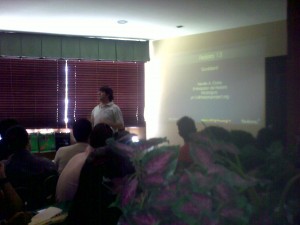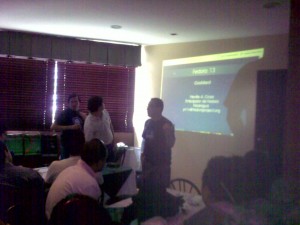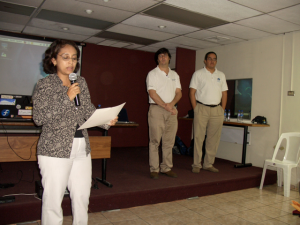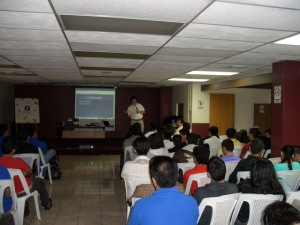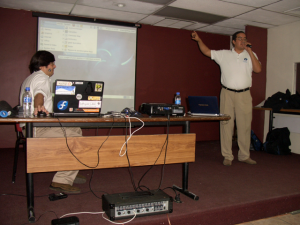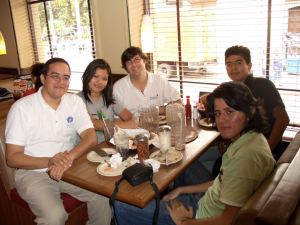Fedora premium events are a life experience. I drank more beer in Flock than I have drank in the whole year. What probably is not much as I only drank four pints. Going into the FudPub and meeting old friends and attaching faces to IRC nicks is also part of the event. I would like to go deeper that wrote a tale of what I did and what I saw at Flock.
One of the key things that I immerse myself was Fedora.Next. I was more o less aware of what would be the products Workstation, Server and Cloud. But I did not know about the Base or Environment and Stacks. Base has been streamline a lot to make the minimal install really minimal. They have been a lot of progress, but there is a lot of dependencies to trim out. The more they trim out, the smaller the cloud image will be. One important thing from my standing point was to be sure that there is going to be a off-line installable media for workstation. This is a must for Latin America and several other places where internet is limited.
There is a term that I keep hearing event after event, burn out. As a primarily voluntary driven organization we should strive to keep a healthy rate of new collaborators to collaborators leaving the project to new challenges in their life. Should we, as a project, implement human resources actions. Think in recruitment, training and rewards. Not thinking in monetary rewards, but in a feed back that a collaborator is doing well, their work is relevant and so on. A tap in the shoulder. How we manage to keep someone interested when the prize for doing something great is get to do more of the same. Not a easy topic, but avoiding it will not make it go away. As I said, I keep hearing burn out event after event.
Another recurring topic is the “easy fix list”. Apparently it is an idea that everybody agrees that is needed, but is not really happening. There are some teams that have some success. Easy fix are a way to help people starting with the project some opportunities to do something while they learn how the work flow is in the project. Also is an opportunity for a newbie to see if they like that area of the project. We need a project wide easy fix list. But apparently creating a easy fix list is a challenge. Most collaborators tend to correct easy fix they find instead of making a list.
One thing that really surprised me is how worried people are about make sure that any action is perceived as community driven. Even further, not remotely related with Red Hat agenda. I don’t have any solid reference, but I feel that there is a small number of people that are paranoiac and vocal about this issue. Fedora Project Leader stated that the relationship between Red hat and Fedora is symbiotic. Fedora is not ready to live without Red Hat support. Red Hat need something like Fedora to drive innovation and they will struggle badly without Fedora. Since the package signature compromise occurred on Fedora 8 time frame, I haven’t see any clash between Fedora and Red hat that justify this over thinking. Probably is a historical mind frame that we have been unable of shake out.
This Fedora versus Red Hat, has a parallel. North versus South. To many Latin American collaborator, there is a preference toward North American and European collaborators. It is a rumor, people express that way. When it comes to point an example, no one has been able to point me to a clear one. Both issues are not to be dismiss, but I think they need to bring back into proportion.
I have no idea what docker really is. On one of the plenary session it was written on the board “docker, docker, docker”. Along my life I have been find that when something is all, then is nothing. Not because it does not exist, but because you can not differentiate. In any case, I was unable to learn what docker is about on Flock. There were several session that addressed that topic. My schedule selection was driven from what was expected from me and not driven from what I want. I feel myself conflicted because I am losing learning opportunities and away of facing new challenges. I feel my self stuck. Worst of all, I am not having fun. I believe that fun is what keep people from burning out. I sincerely think that fun should be our fifth foundation on the Project.
As an example of things that are not fun in the project, it is our current event announcement process. One person announcing an event needs to create a wiki page to describe the event, then has to edit the event wiki page to list his or her event and if it is a release event also has to edit the release event wiki page. That is only to announce one event without requesting any support. If support is requested, there is the need for opening a trac ticket and showing up at a IRC meeting. I going to be blunt and say it. I rather do an event without announcing it, it is to much work to do all that. The real problem with this is the public. All distributed information, primarily online information, point to the wiki event page. Which as you may expect is outdated and incomplete. There is need to keep track of logistic within the project, but we need to have a easy way to announce events to the public. I find really hopeful that this time we focus in having something working instead of having something perfect. I think that Ruth Suehle has some merit in this focus. In any case, Fedocal should soon start to list our events.
Finally, I am trill to be part of the change in the Fedora Governance model. We are moving from a public elected members that did not have a clear role as member to engage in meaningful leadership to a representative model. I really do not know how this is going to work and what shape will have. But this time that this change into uncharted organization structure will be good. It will set things in motion for going out of the comfort zone.
I have two regrets about the event. First is that the schedule has a democratic input that came from people that were not present at the conference. I have no idea how to improve it at the moment, but we need to rethink this. The second thing that I regret is not having a free day in Prague. This is a recurring happening. From six different Fedora premium events that I have been attending, only once I have been able to have some spare days to explore the place. I did try to get out on the first day. Every time that I tried to leave the hotel, new people were arriving and got into the welcoming crowd. This repeated until it was late for dinner and we group to look for food. I feel that this is great, it is part of the bonding experience of the event. But I can not stop thinking about being on the most beautiful city of Europe and I can not really confirm it or denied.
There is most that this event get me thinking, but I will save it for upcoming posts.
